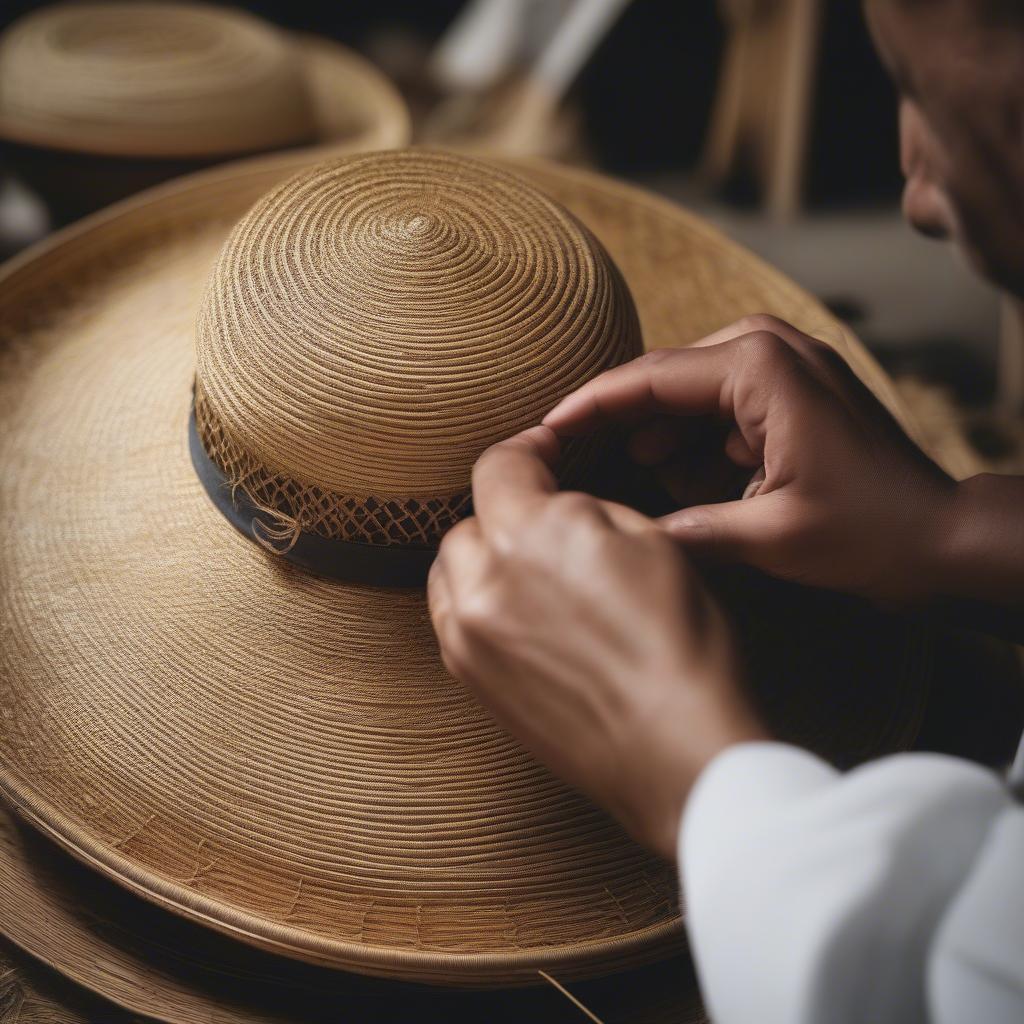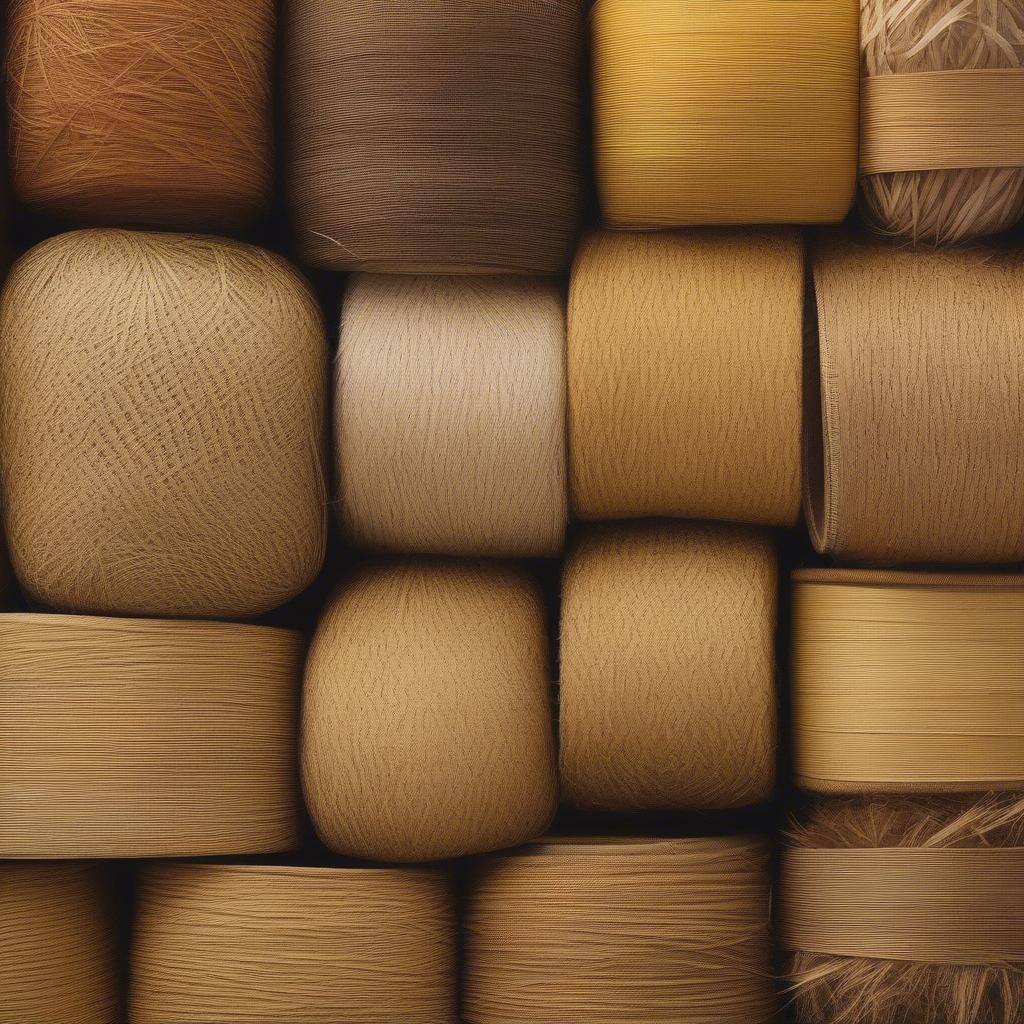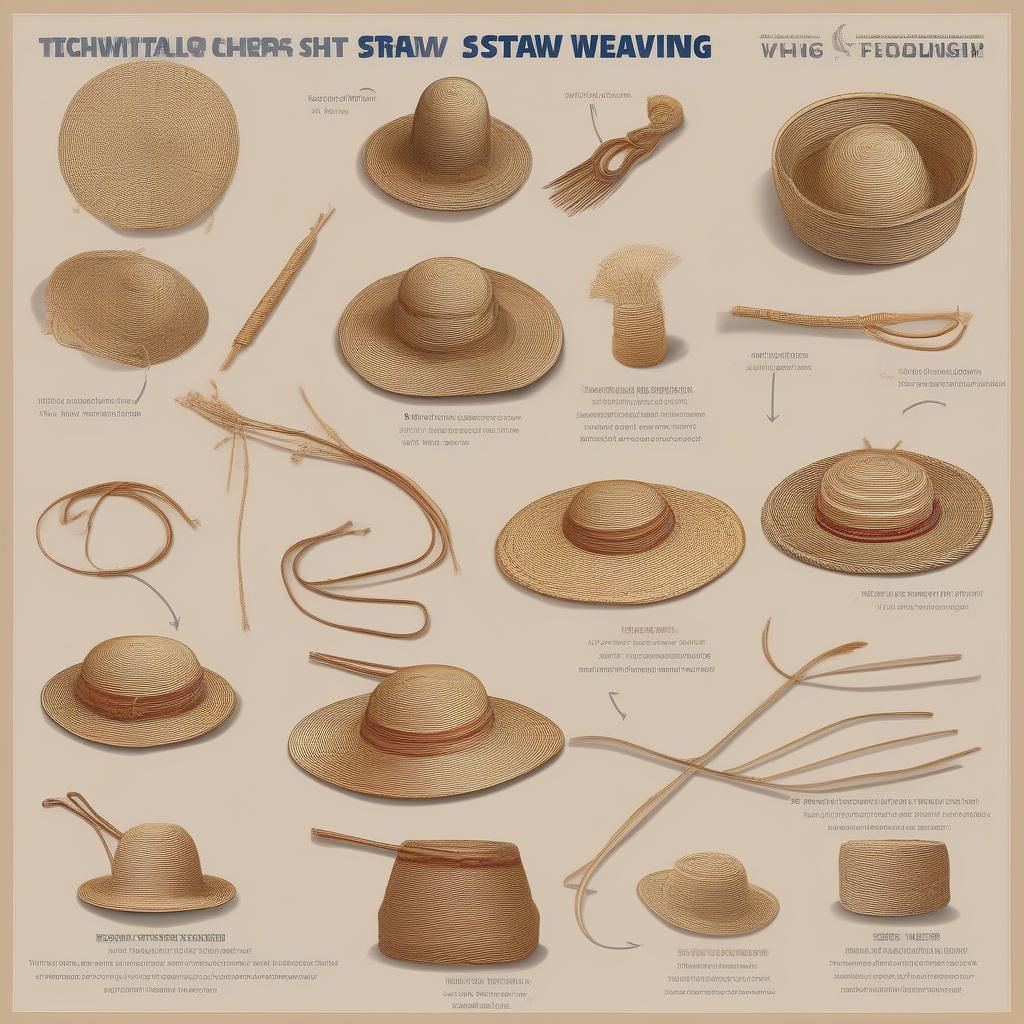Weave Hat
The Art of Hat Weaving Straw: A Comprehensive Guide
Hat Weaving Straw is a time-honored craft, transforming simple straw into stylish and functional headwear. From the iconic Panama hat to the rustic sun hat, straw hats offer protection from the elements while adding a touch of elegance or casual charm to any outfit. This guide delves into the fascinating world of hat weaving with straw, exploring its history, techniques, and the diverse materials used.
 Close-up of hands weaving a straw hat
Close-up of hands weaving a straw hat
A Brief History of Straw Hat Weaving
Straw hat weaving has ancient roots, with evidence suggesting its practice dates back thousands of years. Early civilizations utilized readily available natural materials like straw and reeds to create protective headwear. Over time, these practical items evolved, incorporating regional styles and techniques. The weave hat tradition continues to thrive today, both as a treasured cultural heritage and a vibrant contemporary craft.
Choosing the Right Straw for Hat Weaving
The type of straw used significantly impacts the final look and feel of the woven hat. Common choices include wheat straw, rye straw, and raffia. Wheat straw offers a golden hue and pliable texture, ideal for classic designs. Rye straw, with its longer fibers, is preferred for creating durable and sturdy hats. Raffia, known for its strength and flexibility, is a popular choice for intricate woven patterns.
 Variety of straw types used in hat making
Variety of straw types used in hat making
Essential Tools for Hat Weaving Straw
Before embarking on your hat weaving journey, assembling the right tools is crucial. A sturdy weaving frame provides a foundation for shaping the hat. Needles, specifically designed for straw weaving, facilitate the intricate interlacing of the straw strands. Sharp scissors are essential for trimming and shaping the straw. A measuring tape ensures accurate sizing, and a spray bottle filled with water helps keep the straw pliable during the weaving process.
Basic Straw Hat Weaving Techniques
Hat weaving with straw involves various techniques, each yielding unique textures and patterns. The basic plaiting technique creates a simple, yet elegant design, ideal for beginners. Twining, a more advanced technique, produces a tighter weave with a distinct visual appeal. Coiling, another popular technique, involves wrapping straw around a core, creating a spiral effect. Learning these techniques opens a world of creative possibilities for panama hat weaver greatest.
 Examples of plaiting, twining, and coiling techniques
Examples of plaiting, twining, and coiling techniques
Caring for Your Straw Hat
Proper care ensures the longevity of your handwoven straw hat. Store your hat in a cool, dry place, away from direct sunlight. Avoid exposing it to excessive moisture. To clean your hat, gently brush it with a soft-bristled brush. For stubborn stains, consult a professional cleaner specializing in delicate textiles.
What is the best straw for a beginner to use for hat weaving?
Wheat straw is a good option for beginners due to its pliability and ease of manipulation.
How long does it take to weave a straw hat?
The time required varies depending on the complexity of the design and the weaver’s experience. A simple hat can take several hours, while more intricate designs can take days or even weeks.
Where can I find straw hat weaving supplies?
Craft stores, online retailers, and specialized suppliers offer a wide range of straw hat weaving materials and tools. You can also check out the lorenzo basket weave slouch hat.
What are some common patterns used in straw hat weaving?
Common patterns include the basic plait, the herringbone, and the twill. More experienced weavers can explore complex geometric patterns and intricate designs.
Can I dye straw for hat weaving?
Yes, natural dyes can be used to add color to straw. This allows for greater creative expression and customization.
Are there online resources for learning straw hat weaving?
Numerous online tutorials, videos, and workshops offer step-by-step instructions and guidance for aspiring hat weavers. Check out our helpful resource on boater hat weaving instructions.
How do I measure my head for a woven straw hat?
Use a measuring tape to determine the circumference of your head, wrapping it around your forehead, just above your eyebrows.
In conclusion, hat weaving straw offers a rewarding and creative outlet. Whether you are a seasoned craftsperson or a curious beginner, the art of transforming simple straw into a beautiful and functional hat is a journey worth exploring. From the selection of materials to the mastery of weaving techniques, hat weaving straw connects us to a rich history while allowing us to express our unique creativity.
When in need of assistance, please contact our Hotline: +84 388 951 999, address: Hanoi, Vietnam or Tech Avenue, Suite 12, San Francisco, CA 94105, USA. We have a 24/7 customer service team.
